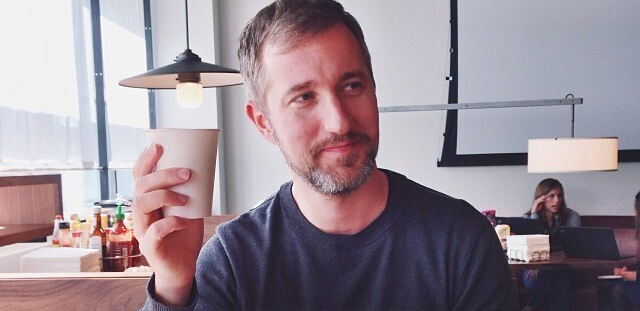What is it that you do as CPO at Alight?
In my role as Chief Product Officer, I look at the sweet spot where hardware, software and data intersect. Here we spend time making our customers’ solar installations more efficient and easier to understand, be it in terms of production, financials or availability.
Take, for instance, our newly launched interactive power purchase agreement (PPA) calculator that enables potential customers to see how a solar park backed by a PPA will perform compared to forecasts of the wholesale electricity market. While by no means groundbreaking, our PPA calculator has helped quite a few people gain a better understanding about the full potential of a PPA.
Prior to joining Alight, I spent 12 years at Spotify – first as a software engineer, then as a product manager, and finally as Spotify’s Head of Content Platform. That journey brought necessary and much wanted change to the audio industry – I’m hoping I can do similar things for Alight in the solar space.
Why is storage + digital such a big deal for solar power?
I believe you need to take a step back to understand why adding storage into the mix is exciting.
Electricity produced by solar panels that are not backed by storage must be consumed as it is produced. You either consume this electricity directly at the facility housing the installation, or you transfer it (read: sell it) to the main grid where it is consumed by someone else.
Adding storage capabilities means that you can decouple energy production from energy consumption. Since most businesses and households tend to use electricity in some shape or form around the clock, it is easy to see how adding storage can make your solar panels cover a larger part of your overall electricity needs. In other words: you no longer need to sell surplus electricity produced during daytime, but instead can use it when the sun isn’t shining.
But that’s just the beginning. Where it gets really exciting is when you add a software layer into the mix to connect the various pieces of hardware involved [1]. To put it simply, adding a sophisticated software layer into the mix allows you to begin optimising solar production and consumption in ways that weren’t feasible before. Peak wholesale electricity prices during daytime when you’ve got surplus solar production locally? Instead of storing it yourself, sell what you’re not using instantaneously and bank the money. Then later in the evening, buy cheap green energy [2] from the main grid and store it locally to avoid buying electricity during the morning peak hours before the sun comes up.
In other words: the combination of software, storage and solar will allow humankind to maximise the yield from the sun and other green energy sources in ways that simply aren’t possible without software.
What will it mean for the customer (in terms of customer values?)
As touched upon in the previous question, it depends on what you’re aiming for. At Alight, we believe in a world powered by solar. Maximising the yield from your solar panels so that you don’t have to acquire as much electricity from the main grid translates directly into value. This effectively reduces the administrative fees and taxes you pay for when you buy and sell energy from the main grid.
You could also maximise for overall green energy (regardless of production method) [2], or for money. Or a combination of both! A competent software stack can juggle advanced production models and forecasts, financials, consumption, weather and the wholesale electricity market itself…plus much more! Software can also be intuitive, automatically teaching itself to adjust and improve operations based on experience without being explicitly programmed. This should be seen as an important value-add compared to more traditional approaches where you rely on – and pay for – experts to optimise operations based on the parameters you define.
And while you can codify some of this using traditional business logic and/or human expertise, there will obviously be components of optimisation that can only be achieved if you tap into more recent advances in computer science, like machine learning. I’m personally very fond of some of the discovery work we did at Spotify where machines figured out what new music we should recommend. I firmly believe there will be similar breakthroughs when you apply advances in computer science to the solar space.
What are the enablers to get there? And how far has the market come today?
There’s already exciting work happening in the solar space – both on the consumer side and on the business side.
For consumers, you’ve got players like Tibber offering (virtual) storage where surplus solar production from their customers is distributed to other Tibber customers who need to buy additional electricity, which saves money for both producers and consumers on the Tibber side. As more customers become aware of such innovations, they’ll start asking their current providers what they can offer that can match Tibber. This will drive adoption, although over a longer timeframe.
For businesses, you’re basically looking at it from the other side of the coin: as more buyers are considering the switch to solar backed by storage, the market will no doubt evolve as the solar providers themselves will be forced to further develop their offerings to be able to stand out from the crowd. And for customers that already have solar and storage implemented: a competent solar provider will have designed their system in such a way that future software updates can maximise the overall system yield even further.
So if you are a company currently looking into solar to power your operations, what should you think about when it comes to storage + digital today?
If you’ve done your due diligence, you might conclude that it would be wise to wait just a little bit longer before you invest in solar, and you’d get that “next generation” of storage capabilities from day 1. I believe this is a fallacy – especially in the world of PPAs.
Remember that the evolution of storage (and software!) will only accelerate from here on. I recommend that you find a partner that you can trust knows solar not just today, but also tomorrow. Such a partner will either have a storage offering already, or they’ll be able to add it later – when the financials of doing so are sound for both parties.
Personally, I’d also make sure that the partner you go with has a software-first mindset. Or to put it another way: it’s relatively straightforward to add hardware (like storage) to an existing installation, but the overall yield can’t be optimised unless you keep pushing the limits for the software that connects it with the market, your forecasts, etc.
Mattias Arrelid, Chief Product Officer at Alight
Prior to joining Alight, Mattias spent more than 10 years at Spotify – most recently as their Head of Content Platform. In this role, Mattias led some of the most integral products that powers Spotify’s audio catalog – ranging from ingestion of music and podcasts to systems that auto-discovers and organises knowledge about creators and content.
As Alight’s Chief Product Officer, Mattias looks at the combination of solar power, storage and digital capabilities in order to maximize efficiency, savings and sustainability value from our customer’s solar projects.
Notes
[1] There’s always been software present in the solar space, but the various pieces have traditionally been working in Think logging of production data for the panels, battery management systems trying to optimise the lifecycle for the storage capabilities, and so on.
[2] The platforms enabling transactions on the main grids (like Nordpool) may not expose the data needed to perform such optimisations today, but they are constantly evolving.


